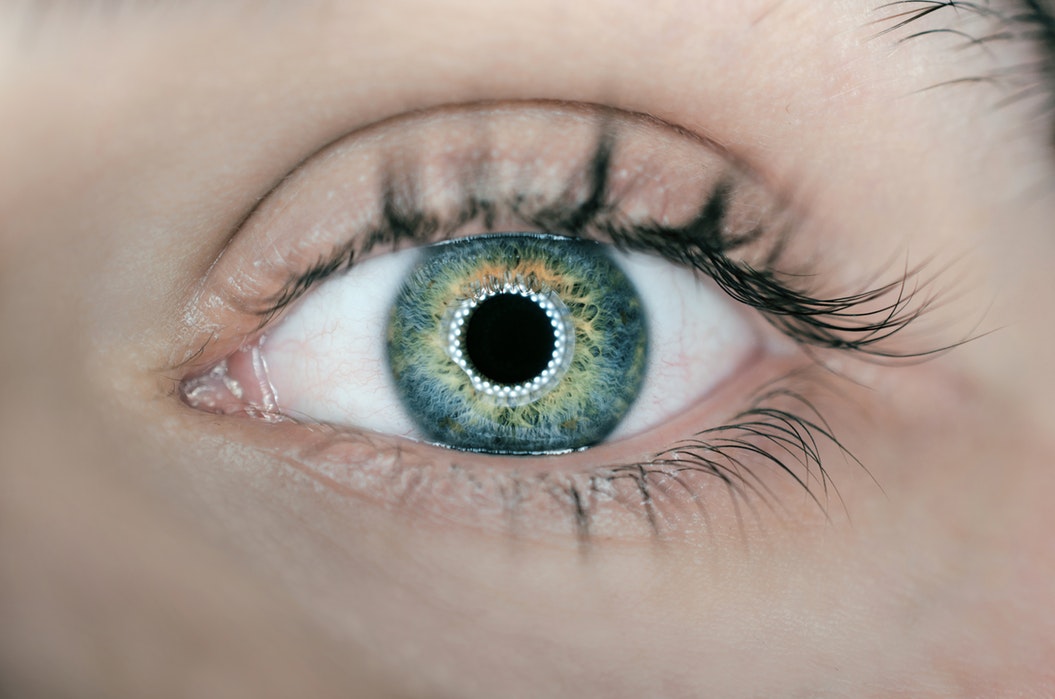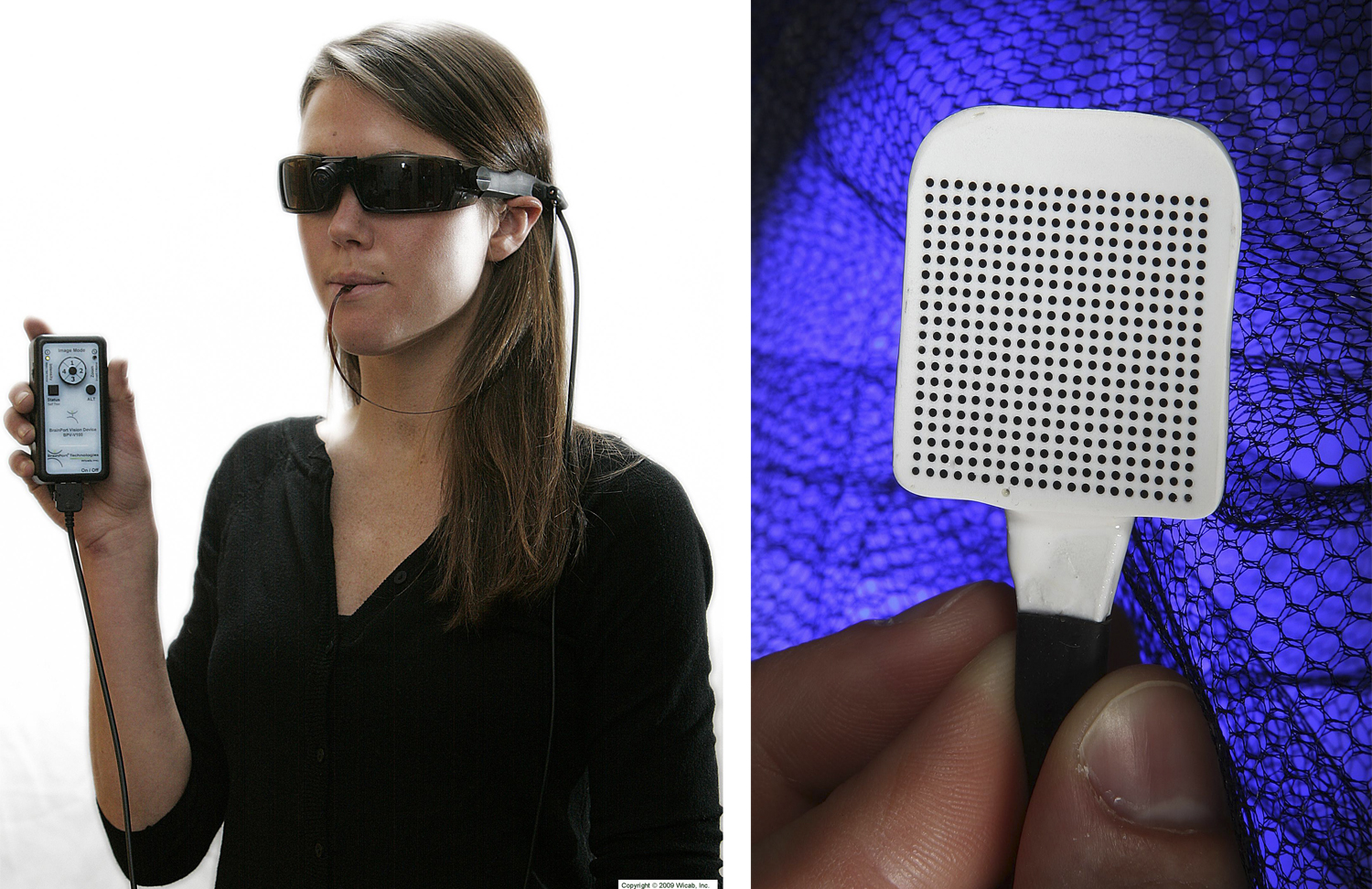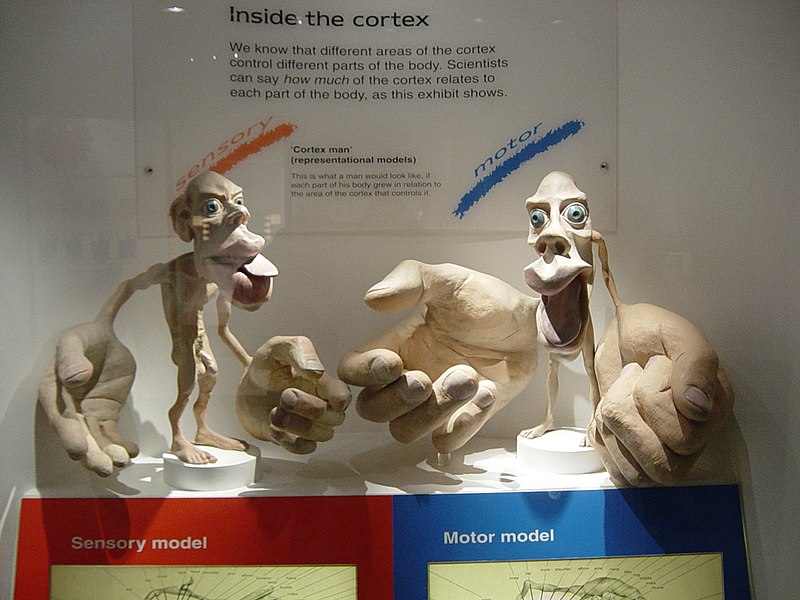
Prompt Images
1. People Can Learn to See With Their Tongues
Did you know there is a device called a BrainPort that lets you “see” with your tongue? Wait, what? How can you “see” with your tongue? It turns out your brain is more adaptable than you think. If you remove visual stimulation, say by becoming blind, your brain will try to use the neural hardware in the visual regions of your brain for something else.

Honestly, she looks like any other Silicon Valley hipster wearing a pair of Google Glass and sipping from a Camelbak.
Here’s how the BrainPort works: There’s a little rectangular pad. Think of the pad as divided into a grid of little boxes. Within each box, the BrainPort can generate an electrical stimulation (or shock). Just enough for you to feel. OK, next, the BrainPort takes a two-dimensional image and converts it into a bunch of electrical stimuli throughout that grid. It’s really quite similar to how LCD screens work: An LCD screen changes the colors of pixels in a rectangular grid according to some input “picture.” The BrainPort does something similar, except instead of changing the colors of pixels,, it changes the electrical currents in a rectangular grid made of “shoxels”.1
Now, take that pad and stick it on your tongue. The strength and frequency of the electrical current across your tongue will vary according to the particular picture being encoded.
So far this seems dumb and pointless. What does shocking the tongue in a funny pattern have to do with actually seeing an image? Well, here’s the “crazy” part.
Your brain will recognize that feeling this two-dimensional surface of tactile stimulations on your tongue seems an awful lot like seeing a two-dimensional image of something with your eyeballs. So it will feed that tactile information into the visual regions of your brain, which are otherwise not currently occupied. The result is that you will have the sense of “seeing” those images, though I suspect the images will be pretty crude.2
If you put on a pair of glasses with a camera and project the video images using the BrainPort onto your tongue, like the gal above, well then you can “see” the world around you.
If this one doesn’t blow your mind, feel free to skip the rest. And also go ahead and unfriend me on Facebook.
2. The Cortical Homunculus is a Thing
Speaking of the relationship between your senses and corresponding areas in your brain (well, really, your neocortex), you should know that there is something called the Cortical Homunculus, and it was apparently designed by Shel Silverstein:

In this model, body parts are drawn in proportion to how much area the brain allocates to processing motor and sensory information for them. Turns out your hands are kind of brain resource hogs.
Here’s the three-dimensional version:

The “sensory model” shows relative brain resources devoted to sensing for different parts of your body. The “motor model” shows relative brain resources devoted to controlling different parts of your body. If you are surprised that his penis isn’t the biggest part here, you are in good company.
I don’t have much else to say on this topic. But I felt you should see this weird monstrosity at least once in your life.
3. It’s Honestly a Miracle You Can Read This
As you read this right now you may think your eyes are fixed in place, focussing at one little patch on the screen. But in reality they are rapidly darting around to different focal points in the world around you in something called a saccadic movement.
You don’t think your eyes are moving around rapidly because your brain steadies the image for you. In fact, your brain does a ton of processing on the information from your retinas before it lets you “see” anything. Here’s what the cognitive neuroscientist Stanislas Dehaene wrote about all the work our brain does to give us a nice clear (and steady) picture of the world:
We never see the world as our retina sees it. In fact, it would be a pretty horrible sight: a highly distorted set of light and dark pixels, blown up toward the center of the retina, masked by blood vessels, with a massive hole at the location of the “blind spot” where cables leave for the brain; the image would constantly blur and change as our gaze moved around. What we see, instead, is a three-dimensional scene, corrected for retinal defects, mended at the blind spot, stabilized for our eye and head movements, and massively reinterpreted based on our previous experience of similar visual scenes. All these operations unfold unconsciously—although many of them are so complicated that they resist computer modeling. For instance, our visual system detects the presence of shadows in the image and removes them. At a glance, our brain unconsciously infers the sources of lights and deduces the shape, opacity, reflectance, and luminance of the objects.
Your brain is basically doing what you do with Instagram filters: taking a pale, out of focus, and meh scene and turning it into something straight out of National Geographic. #unfiltered #sike #itsallfiltered
4. It’s All Just Electricity
I’d be remiss if I didn’t remind you that all of your senses work by way of electricity. When light impinges on your retina, that’s electricity. Photons are literally little bits of electricity. When sound waves shake the bones in your ears, the “shaking” is molecules jostling around. Why do they jostle around? Because there are electrical forces holding them together as if by tiny springs. Smell and taste? Those are from chemicals in the air impinging on chemical receptors in your nose and mouth. Guess how chemical receptors “detect” chemicals? You guessed it… electricity. When you kiss someone and feel some electricity, that’s because it’s literally electrical forces between your lips that cause you to feel anything at all. Nothing actually ever touches anything else at the atomic level. It’s all just atoms interacting through electricity.3
5. I Can’t Taste A Damn Thing When I Have a Bad Cold
Nearly 80 percent of taste is actually due to smelling the food. I can vouch for this fact because when I get a bad cold I cannot taste a damn thing. Not. A. Damn. Thing. And it infuriates me. Especially when I’m on my honeymoon in Mexico and excited to eat tasty food with my new wife. I mean, I couldn’t even taste the half a bottle of Tapatío that I drank to prove to my wife how bad things were.
I know this is more a weird personal fact about me than a crazy universal fact about our senses, but it really pisses me off and this seemed as good a place as any to vent.
Footnotes:
1 Based on a quick Google search, I believe I just coined the term “shoxel.”
2 As far as I know, you can’t find BrainPorts with 4K resolution.
3 Technically, it’s not electricity. Electricity is the motion of charged particles like electrons. It’s a very specific kind of electric energy. What I’m talking about is really electrical forces, or electromagnetic forces. But electricity just seems more poetic.



